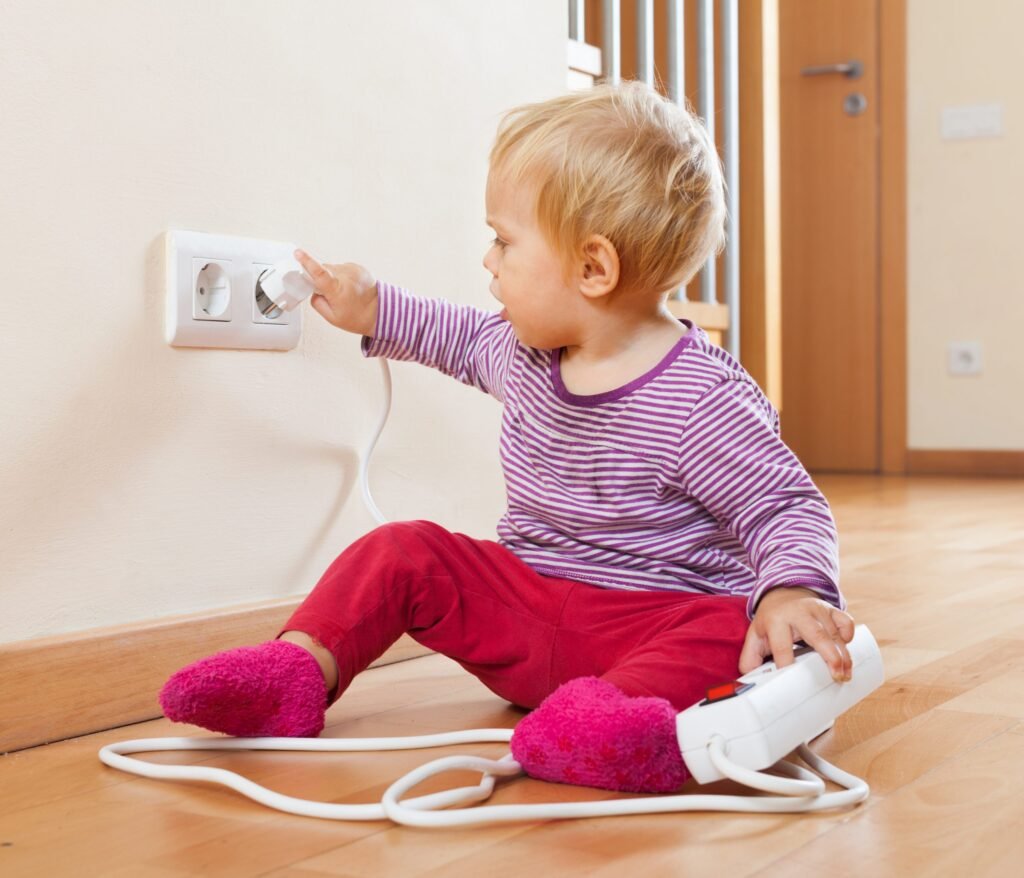Welcoming a baby into your home is a joyful experience, but it also requires you to transform your living space into a safe environment. Babyproofing is an essential process that minimizes risks and protects your little one from potential dangers as they begin to crawl, walk, and explore. This detailed guide will walk you through effective strategies and techniques for babyproofing your home, room by room.

Why Babyproofing is Essential
Babies are naturally curious and tend to explore their surroundings by touching, pulling, and tasting everything within reach. Babyproofing helps prevent accidents, injuries, and hazards. According to the American Academy of Pediatrics (AAP), unintentional injuries are the leading cause of death among children aged 1 to 4 years. Babyproofing is a proactive step that reduces these risks, allowing you to focus on enjoying your time with your child.
When to Start Babyproofing
It’s best to begin babyproofing your home during pregnancy or in the early months after your baby is born. By the time your baby starts crawling—usually around 6 to 10 months—you should have most of the necessary safety measures in place. This early preparation allows you to adjust your home as your child grows and develops new skills.
Essential Babyproofing Supplies
Before diving into the babyproofing process, it’s important to gather some essential supplies. Here are common babyproofing tools to consider:
- Outlet covers: Prevent babies from sticking their fingers or objects into electrical sockets.
- Corner guards and edge bumpers: Protect against sharp corners and edges on furniture.
- Cabinet and drawer locks: Secure cabinets containing dangerous items like cleaning products, sharp objects, or medications.
- Baby gates: Block off areas like stairways, kitchens, and other rooms that are off-limits.
- Cordless window blinds: Eliminate choking hazards associated with dangling cords.
- Anti-tip furniture straps: Secure heavy furniture to walls to prevent tipping.
Room-by-Room Babyproofing Guide
1. Living Room
The living room is often where your baby will spend a lot of time playing and exploring. Here are some key areas to focus on:
- Secure furniture: Use anti-tip straps to anchor bookshelves, TV stands, and other heavy furniture to the walls. This prevents tipping if your baby tries to climb or pull themselves up.
- Cover sharp edges: Use corner guards on coffee tables, end tables, and other furniture with sharp corners to reduce the risk of injury.
- Hide cords and wires: Tuck away electrical cords and use outlet covers to prevent babies from pulling on them or inserting objects into sockets.
- Secure the TV: Flat-screen TVs should be mounted to the wall or secured with straps to avoid tipping.
- Window safety: Install cordless window coverings or use cord cleats to secure window blind cords, preventing strangulation hazards.
2. Kitchen
Kitchens can pose many dangers, so it’s vital to babyproof this area carefully.
- Install cabinet locks: Place locks on lower cabinets that contain cleaning supplies, sharp knives, or small items that could pose choking hazards.
- Use stove knob covers: Prevent your child from turning on the stove by installing covers over the knobs.
- Store appliances securely: Heavy appliances should be kept out of reach, and cords should be secured to avoid accidental pulls.
- Use a baby gate: Consider installing a gate to keep your baby out of the kitchen while cooking.
- Remove hazardous items: Keep chemicals, knives, and other dangerous items out of reach and secured in locked cabinets.
3. Nursery
The nursery is a special place for your baby, and safety is paramount.
- Crib safety: Ensure the crib meets safety standards with slats no more than 2 3/8 inches apart. Avoid placing pillows, blankets, or stuffed animals in the crib to reduce the risk of suffocation.
- Changing table safety: Always keep one hand on your baby during diaper changes to prevent falls. Store changing supplies within reach but out of your baby’s grasp.
- Secure furniture: Use anti-tip straps to secure dressers, bookshelves, and other heavy furniture.
- Monitor safety: A baby monitor allows you to keep an eye (or ear) on your little one while they sleep.
4. Bathroom
Bathrooms contain unique dangers that require special attention.
- Install toilet locks: Toilet locks prevent your child from opening the toilet lid, which can be a drowning hazard.
- Store hazardous items securely: Keep cleaning supplies, medications, and cosmetics in locked cabinets or out of reach.
- Use non-slip mats: Place non-slip mats in the bathtub and on the floor to prevent slips and falls.
- Faucet covers: Install padded faucet covers to protect your baby from hitting their head during bath time.
5. Stairs and Hallways
Stairs can be particularly hazardous as babies begin to crawl and walk.
- Install baby gates: Place gates at the top and bottom of staircases to prevent falls. Ensure that the gate at the top is securely mounted for added safety.
- Use railing guards: If your stair railing has wide gaps, install guards to prevent your baby from slipping through.
- Keep stairways clear: Ensure stairs are free of clutter and obstacles to prevent trips.
6. Living Room and Play Areas
Designate safe play areas in your living room where your baby can crawl and explore safely.
- Create a safe space: Use baby gates to cordon off areas where your baby can play safely, away from sharp furniture or stairs.
- Regularly check for hazards: Routinely inspect play areas for small items that could pose choking hazards and remove any dangerous objects.
7. Miscellaneous Babyproofing Tips
- Pet safety: If you have pets, supervise their interactions with your baby and establish separate spaces when necessary.
- Fireplace safety: If you have a fireplace, use a screen or gate to keep your baby at a safe distance.
- Door stoppers and pinch guards: Install door stoppers to prevent doors from slamming on little fingers and pinch guards to protect against finger injuries.
- Regularly update safety measures: As your child grows, regularly assess your home for new hazards and adjust your babyproofing efforts accordingly.
Final Thoughts
While babyproofing is essential, it should never replace adult supervision. Always keep a watchful eye on your baby, as no amount of babyproofing can eliminate all risks. Being proactive and prepared can create a safer environment for your baby to explore and grow.
In addition, consider involving your child in safety discussions as they get older. Teaching them about hazards and safe behaviors lays the foundation for a lifetime of safety awareness.
By implementing these babyproofing strategies, you can create a nurturing and safe space for your little one, allowing them to thrive while giving you peace of mind.
